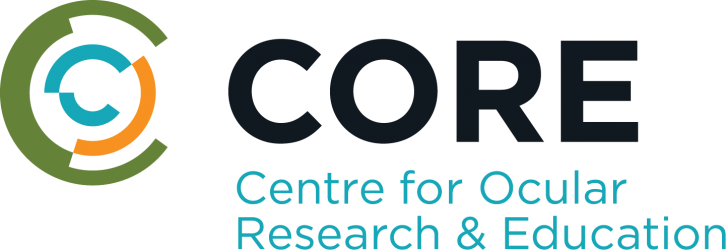WATERLOO, Ontario, June 26, 2024—Prescribing soft toric contact lenses is center stage for Issue 78 of Contact Lens Update. Left uncorrected when eye care providers instead prescribe spherical soft lenses, astigmatism can lead to reduced visual acuity, visual fatigue, poor overall vision quality, and dropout.
Published by the Centre for Ocular Research & Education (CORE), the bi-monthly publication is available at no charge by visiting ContactLensUpdate.com.
“The benefits of prescribing toric soft contact lenses for low to moderate astigmatism are important to consider, given that 45% of our patients have 0.75 D or more of refractive astigmatism, and 35% have 1.00 D or more,” said Daddi Fadel, DOptom, FSLS, FBCLA, FAAO, FIACLE, a clinical scientist at CORE.
“The inability to tolerate the visual disturbances caused by residual astigmatism is a major reason why many patients abandon soft contact lenses. Recognizing the advantages and surmounting obstacles like visual performance, comfort, cost, and chair time are essential for patients’ well-being. When assessing the cost-effectiveness of soft toric lenses compared to spherical ones in astigmatic individuals, practitioners should note that toric lenses provide significant advantages, often surpassing wearers’ expectations despite the increased cost. Prescribing toric soft contact lenses for low and moderate astigmatism should become a standard practice.”
Philip Morgan is professor of Optometry, head of Optometry, deputy head of the Division of Pharmacy and Optometry, and director of Eurolens Research at The University of Manchester. His editorial highlights evidence that indicates some patients who could benefit from toric soft contact lenses are not receiving appropriate fitting. Additionally, his piece debunks conceived barriers such as poor visual performance, reduced comfort, and increased cost and chair time.
Dr. Melissa Barnett is the director of Optometry at the University of California, Davis, and globally recognized expert in specialty and scleral lenses, dry eye disease, keratoconus, and presbyopia. She authors the feature article examining the willingness to pay for soft toric lenses versus spherical contact lenses in individuals with astigmatism, shedding light on consumers’ perceived value of the attributes of these lenses.
Doerte Luensmann, a senior clinical scientist at the Centre for Ocular Research and Education, is involved in clinical trial management for multisite studies conducted in Canada and worldwide to support the development of study designs and management of clinical sites. Her clinical insight presents a case report illustrating the ineffectiveness of spherical lenses in correcting corneal astigmatism, emphasizing the significance of prescribing toric soft contact lenses for even low levels of astigmatism.
The conference highlight is shared by Micheal Read, the new technologies manager at Eurolens Research, The University of Manchester, where he liaises with the contact lens industry and manages clinical and laboratory research projects. His poster presents the findings of their study on the visual effectiveness of soft toric contact lenses in cases of mild to moderate astigmatism.
In addition to a complete archive of back issues, ContactLensUpdate.com offers a resource library that provides no-cost professional tools, patient resources, images and video. It also houses complimentary technical training videos produced by International Association of Contact Lens Educators, plus an industry glossary. Industry professionals can access the latest issue directly from ContactLensUpdate.com or quickly sign up for email receipt of future issues.
The publication receives support from the educational arms of Alcon, CooperVision, and Johnson & Johnson Vision.
# # #
About the Centre for Ocular Research & Education (CORE)
The Centre for Ocular Research & Education (CORE) was established in 1988 at the University of Waterloo’s School of Optometry & Vision Science. Over the next three decades, the organization evolved from a three-person operation into a thriving hub of basic and applied research, collaborating with sponsors, agencies and academia on advanced biosciences, clinical research and education. Its uncompromising independence and results of the highest quality have been at the heart of many of the most prominent advances in eye health. Today, its approximately 50-person team serves a range of ophthalmic sectors, including medical devices, ocular pharmaceuticals, digital technology and others, with a focus on the anterior segment. For more information, please visit core.uwaterloo.ca.
MEDIA CONTACTS
Lyndon Jones, Director, CORE
+1.519.888.4065 or lwjones@uwaterloo.ca





